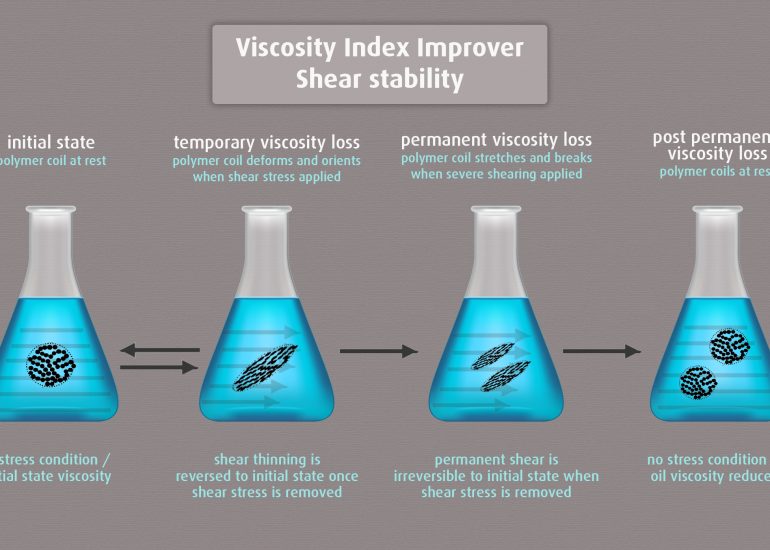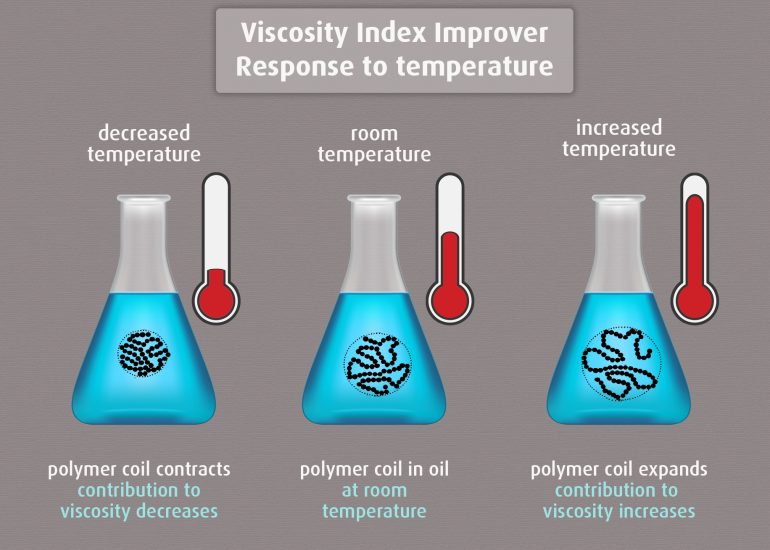VIIs: additives that stick with you through thick and thin
VIIs: additives that stick with you through thick and thin
Condition monitoring specialist company, WearCheck, examines Viscosity Index Improvers (VIIs) – a very special class of additives that is gaining importance as the technical demands placed on lubricants continue to escalate.
“VIIs are large-polymer additives that partially prevent the oil from thinning out (losing viscosity) as operating temperatures increase. They are also responsible for better oil flow at low temperatures, resulting in reduced wear and improved fuel economy,” explains Steven Lumley, technical manager for WearCheck.
“To visualise how a VII additive functions, think of the VII as an octopus that stays coiled up in a ball at low temperatures and has very little effect on the oil’s viscosity,” she elaborates. “As the temperature rises, the additive (or octopus) expands or extends its tentacles. As it gets larger, it prevents the oil from thinning out too much at high temperatures.”
VIIs are used in multi-grade engine oils, automatic transmission fluids, power-steering fluids, gear oils, and certain hydraulic fluids. By far the most common application is for passenger cars and heavy-duty trucks in on-highway and off-highway applications: these applications account for over 80% of all VIIs sold in the lubricant market globally.
Unfortunately, VIIs do have a couple of negative attributes. “The additives are large (high molecular weight) polymers, which makes them susceptible to being cleaved into small pieces due to shearing forces experienced in certain mechanical environments. For example, gears are notoriously hard on VII additives. Permanent shearing of the VI-improver additive can cause significant viscosity losses,” says Lumley.
“A second type of viscosity loss occurs due to high shearing forces in the load zone of frictional surfaces like journal bearings. The VII loses its shape, or uniform orientation, and therefore loses some of its thickening ability. When this happens, the viscosity of the oil temporarily drops within the load zone, but rebounds to its normal viscosity after it leaves the load zone,” she continues.
Higher-molecular-weight VIIs make better thickeners, but tend to have less resistance to mechanical shear. Lower-molecular-weight VIIs, on the other hand, are more shear resistant, but do not improve viscosity as effectively at higher temperatures, meaning they need to be used in larger quantities.
“There are several different types of VII additives, but not all are equal. High-quality VIIs are less susceptible to permanent shear loss than low-cost, low-quality VIIs. It is for this reason that the polymer(s) selected is/are vital to the effectiveness of the VII additive and overall performance of the lubricant at varying operating temperatures. This is especially true of high-temperature, high-shear (HTHS) applications,” Lumley adds.
“Equipment tolerances – along with increased complexity and performance expectations – create an environment of increased stress for the lubricant to operate in due to higher shear forces, higher operating temperatures, increased pressures, and so on. Selecting the optimal VII for use in these environments is increasingly important, as formulators search for ways to minimise HTHS viscosity at higher temperatures to improve fuel economy,” she expands, adding that as equipment manufacturers continue to move to both low-viscosity grades and lower HTHS lubricants, market demand for this additive is set to increase.
What are AIIs? | Polymers and copolymers of methacrylates, butadiene olefins, and alkylated styrenes. |
What do they do? | Reduce the rate of viscosity change with temperature. |
How do they do it? | Polymers expand with increasing temperature to counteract oil thinning; and contract with decreasing temperature to counteract oil thickening. |
Published by
Focus on Transport
focusmagsa






